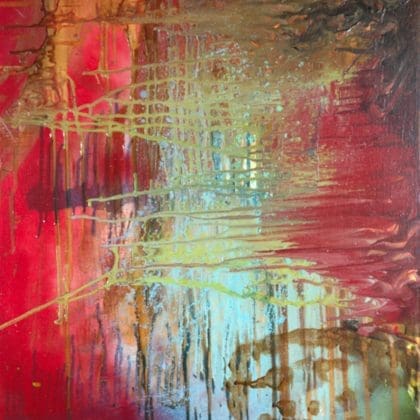Embarking on the journey of art collection can be an exhilarating and rewarding experience. As a beginner art collector with the intent to buy, you are about to enter a world filled with beauty, culture, and potential financial investment. While acquiring artworks is undoubtedly exciting, it’s equally important to learn how to protect and maintain your art collection. In this guide, we will explore the essential steps and practices to ensure the longevity and well-being of your cherished pieces.
Introduction
Building an art collection is not just about acquiring beautiful artworks; it’s about preserving them for future generations to enjoy. Whether you collect paintings, sculptures, photographs, or any other form of art, proper care and maintenance are crucial. Here, we’ll delve into the key aspects of protecting and maintaining your art collection, so your investments continue to bring joy and appreciation for years to come.
1. Display and Lighting
Where and how you display your artworks can have a significant impact on their longevity. Proper lighting is essential to showcase your collection while preserving the art. Here are some tips:
-
Avoid Direct Sunlight: Prolonged exposure to direct sunlight can fade colors and damage delicate materials. Use curtains or UV-protective glass to shield your artworks from harmful rays.
-
Control Humidity and Temperature: Extreme fluctuations in humidity and temperature can cause damage. Aim for a stable environment, ideally with humidity levels between 40% and 60% and a temperature around 70°F (21°C).
-
Use Appropriate Lighting: Invest in museum-quality lighting fixtures that provide even illumination without generating heat. LED lights are often preferred for their low heat emission and energy efficiency.
-
Avoid Overcrowding: Allow each artwork to breathe by spacing them adequately on the walls. Overcrowding can lead to accidental damage when moving or cleaning.
2. Framing and Matting
Proper framing and matting not only enhance the aesthetic presentation of your artworks but also protect them from dust, pollutants, and physical damage.
-
Choose Archival Materials: Opt for archival-quality matting, backing boards, and mounting materials to prevent acid deterioration over time.
-
Frame with UV-Protective Glass: Frame your artworks with UV-protective glass or acrylic to safeguard against UV rays, which can cause fading.
-
Regular Maintenance: Periodically inspect frames for signs of wear or damage and address issues promptly.
3. Handling and Transportation
Artworks are delicate and can be easily damaged if not handled with care. When moving or transporting your collection, follow these guidelines:
-
Handle with Clean Hands: Always wash and dry your hands before touching artwork to avoid transferring oils and dirt.
-
Use Gloves: When handling delicate artworks on paper or canvas, wear clean, cotton gloves to prevent direct contact.
-
Securely Pack for Transportation: When transporting art, use proper packing materials such as acid-free paper, bubble wrap, and sturdy boxes. Label packages clearly.
-
Avoid Bumping or Dropping: Be cautious when moving artworks, and never stack them on top of each other without adequate protection.
4. Cleaning and Dusting
Regular cleaning and dusting are essential to maintain the appearance of your artworks. However, improper cleaning can lead to damage, so follow these guidelines:
-
Use Soft Brushes: Use soft, natural hair brushes or microfiber cloths to gently remove dust. Avoid using feather dusters, as they can scratch the surface.
-
Avoid Moisture: Never use water or cleaning solutions directly on artworks, as moisture can damage many types of art materials.
-
Consult a Professional: For valuable or delicate artworks, consider consulting a professional conservator for cleaning and maintenance.
5. Insurance and Documentation
Protecting your art collection also involves ensuring that you have the necessary insurance coverage and documentation in place:
-
Appraise Your Collection: Regularly appraise your collection to keep its insurance value up to date. If the value of your artworks increases, update your insurance accordingly.
-
Inventory and Documentation: Maintain a detailed inventory of your artworks, including photographs, provenance, purchase receipts, and any relevant documents. Store these records securely.
-
Choose the Right Insurance: Consult with an insurance professional who specializes in art insurance to ensure you have adequate coverage for your collection.
6. Pest Control and Prevention
Artworks can be vulnerable to pests such as insects and rodents. To protect your collection:
-
Maintain Clean Surroundings: Keep your art storage area and display space clean and free of food debris, which can attract pests.
-
Inspect Regularly: Periodically inspect your artworks for signs of pest damage, such as holes, droppings, or chewed materials.
-
Consider Preventative Measures: If you live in an area prone to pests, consider using preventive measures like traps or professional pest control services.
7. Conservation and Restoration
Over time, artworks may require conservation or restoration to address damage or deterioration. It’s crucial to work with trained professionals for these tasks:
-
Consult Conservators: If you notice damage or deterioration, consult with a professional conservator who specializes in the specific medium of your artwork.
-
Avoid DIY Repairs: Resist the temptation to attempt repairs yourself, as well-intentioned efforts can often lead to further damage.
Conclusion
Protecting and maintaining your art collection is a responsibility that comes with the privilege of owning valuable and meaningful artworks. By following these guidelines, you can ensure that your investment remains in excellent condition for years to come. Remember that proper care not only preserves the monetary value of your collection but also allows you to continue enjoying the aesthetic and cultural significance of your art treasures.
As a beginner art collector, it’s essential to educate yourself further on the specific care requirements for the types of art you collect. Additionally, don’t hesitate to seek advice from experts, conservators, and fellow collectors in your art community. With dedication and vigilance, your art collection will be a source of pride, inspiration, and enjoyment for generations to come. Happy collecting and preserving!




